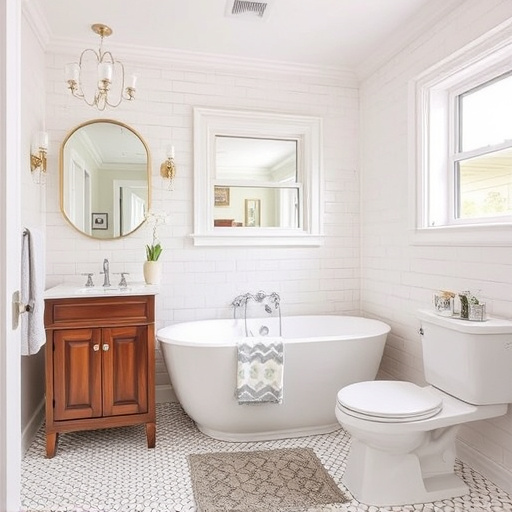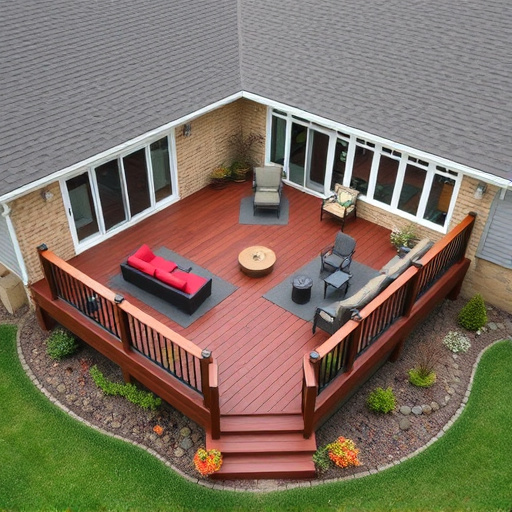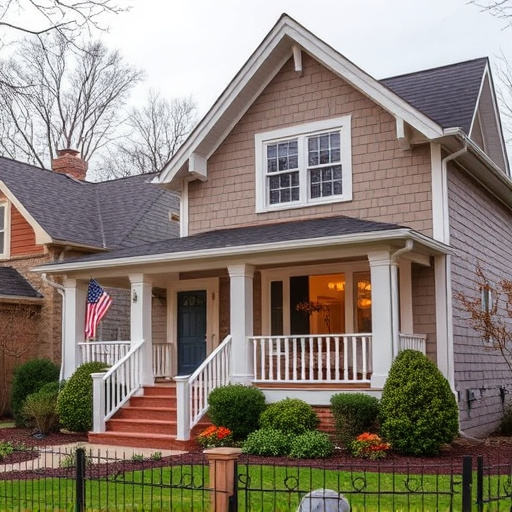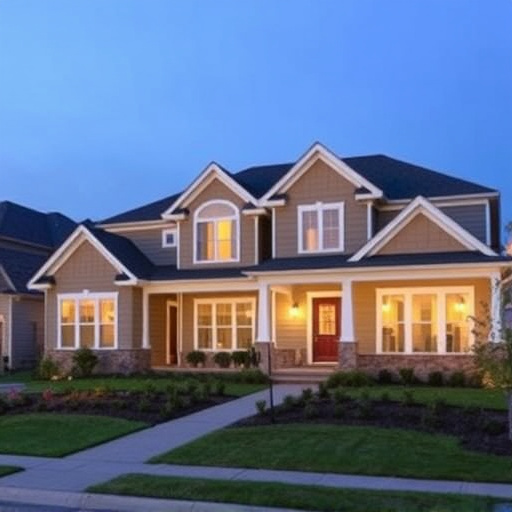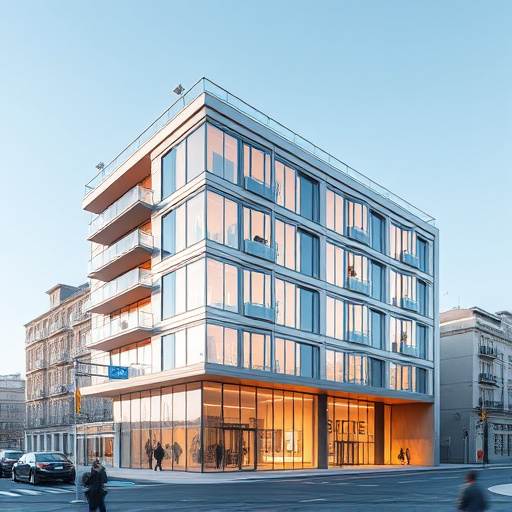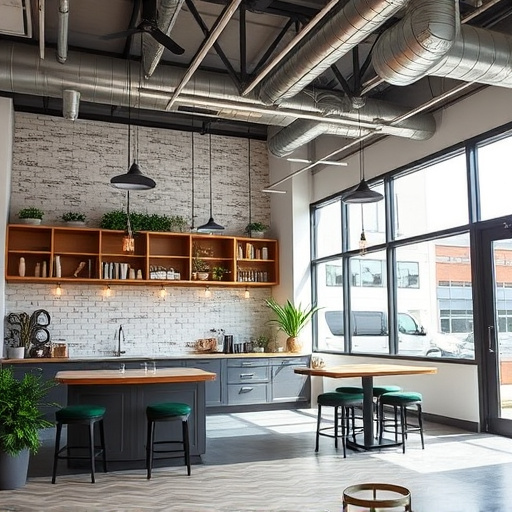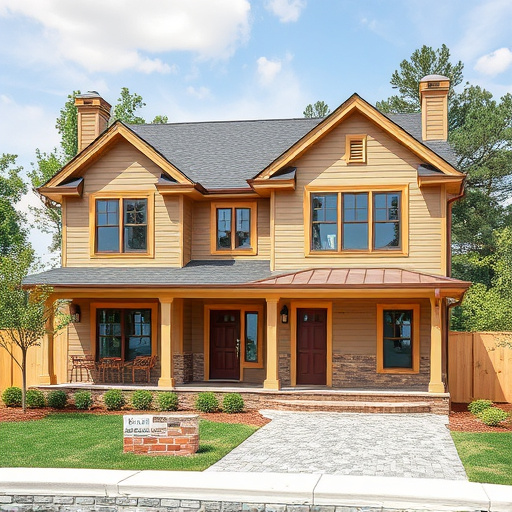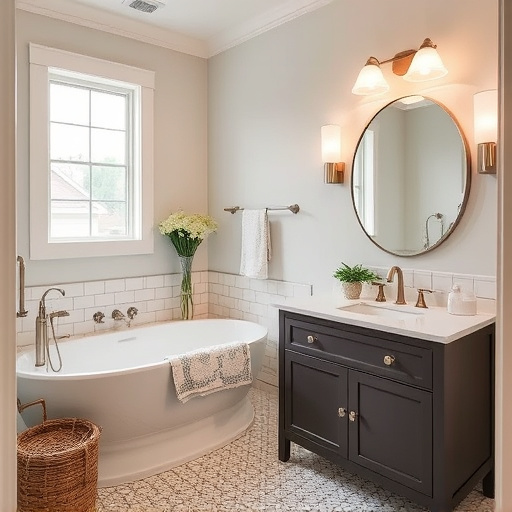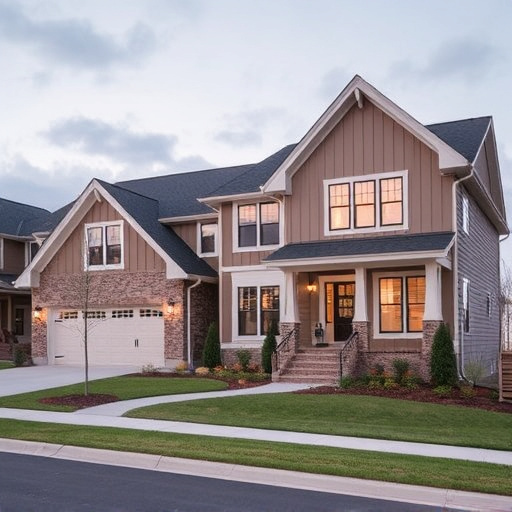Color psychology plays a crucial role in office design, impacting employee well-being and productivity. Warm hues stimulate energy but can cause stress, while cool tones promote calmness and focus. Strategic color incorporation during renovations enhances moods, cognitive functions, and overall productivity, aligning with modern office trends, such as tailored kitchen spaces. A harmonious palette, combining primary and secondary colors, customizes spaces for various tasks and preferences, influencing workflow efficiency and employee satisfaction through applications in remodeling projects.
In the realm of office design, color isn’t merely aesthetic; it’s a powerful tool that can shape productivity, mood, and employee well-being. This article delves into the strategic use of color in offices, exploring its psychology and practical applications. Learn how to create harmonious palettes that boost productivity and foster visual comfort. Discover effective ways to implement color, transforming your office space into an inspiring and healthy environment.
- Understanding Color Psychology in Office Spaces
- Creating Harmonic Color Palettes for Productivity
- Implementing Color to Enhance Visual Comfort and Well-being
Understanding Color Psychology in Office Spaces
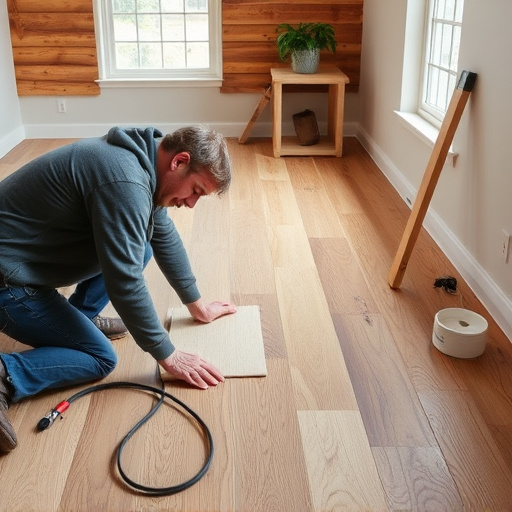
In office design, color psychology plays a significant role in shaping employee moods, productivity, and overall well-being. Different colors evoke distinct emotional responses; for instance, warm hues like red and orange can stimulate energy and creativity but may also cause stress if overused. In contrast, cool tones such as blue and green promote calmness, focus, and relaxation, making them ideal for collaborative spaces or break areas. Understanding these psychological effects allows designers to create functional spaces that enhance productivity while catering to the office environment’s unique needs.
By strategically incorporating colors, renovation services can transform plain offices into vibrant environments. For example, using lighter shades on walls and furniture creates an open, airy feel, enhancing natural light, which is known to boost mood and cognitive function. Incorporating accent colors through decor or specific design elements adds personality without overwhelming the space. This thoughtful approach ensures that office renovations not only visually appealing but also contribute to a healthier, more productive work environment, reflecting the latest trends in functional spaces, including kitchen renovations designed to cater to employees’ diverse needs.
Creating Harmonic Color Palettes for Productivity
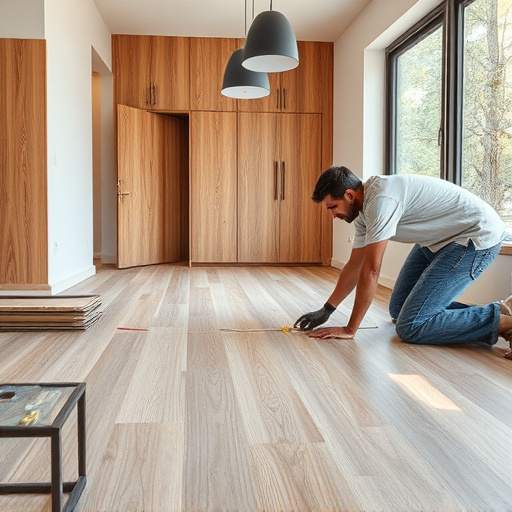
In office design, creating a harmonious color palette is key to fostering productivity and cultivating a positive work environment. Start by selecting a primary color that reflects your brand identity or the desired atmosphere; this will serve as the foundation for your palette. Complement this with secondary colors that offer contrast yet maintain visual balance. For instance, pairing a deep blue (primary) with shades of gray and green (secondary) can create a calming yet energizing space perfect for collaborative areas.
Experimenting with different color combinations in an office design project, whether it’s a multiple room remodel or a kitchen remodel incorporated into the workspace, allows you to tailor the environment to various tasks and user preferences. Remember, colors have psychological effects; bright, warm hues can stimulate creativity while cooler tones promote focus. A well-thought-out palette, when applied across different areas of the office through remodeling or even home remodeling efforts, can enhance workflow efficiency and overall employee satisfaction.
Implementing Color to Enhance Visual Comfort and Well-being
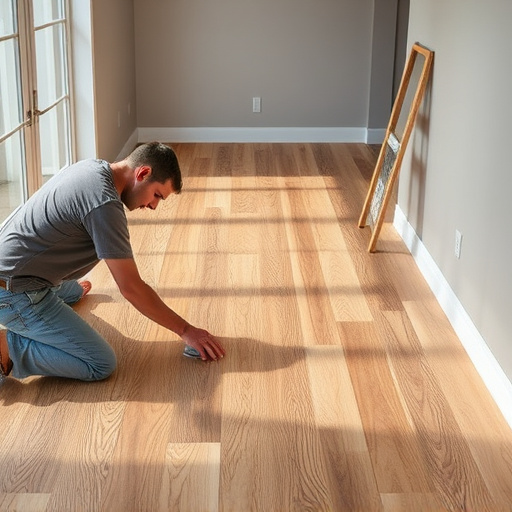
In office design, color plays a pivotal role in enhancing visual comfort and overall well-being. Choosing the right hues can significantly impact productivity, mood, and even physical health. Bright, vibrant colors, when used strategically, can create an energetic and inspiring environment, while calming neutrals and soft shades promote relaxation and focus. Incorporating these elements seamlessly into office spaces ensures a pleasant atmosphere that caters to both employees and visitors.
A thoughtful color strategy in office design goes beyond aesthetics; it influences the way people interact with and perceive their workspace. For instance, incorporating nature-inspired tones can mimic the calming effects of outdoor environments, leading to increased productivity and reduced stress levels. Conversely, bold colors in specific areas can serve as visual anchors, guiding the eye and fostering a sense of organization, making tasks feel more manageable in a busy office setting. This careful consideration of color is particularly important for those involved in home remodeling or whole house remodels, where interior painting plays a crucial role in transforming spaces into functional, comfortable, and aesthetically pleasing environments.
Incorporating color strategically into office design goes beyond aesthetics; it influences employee productivity, well-being, and overall satisfaction. By understanding color psychology and implementing harmonious palettes, you can create an environment that stimulates creativity, reduces stress, and fosters a positive work experience. Color is a powerful tool to enhance your office’s visual appeal and functional layout, ensuring it becomes more than just a place to work—a space where folks thrive.



